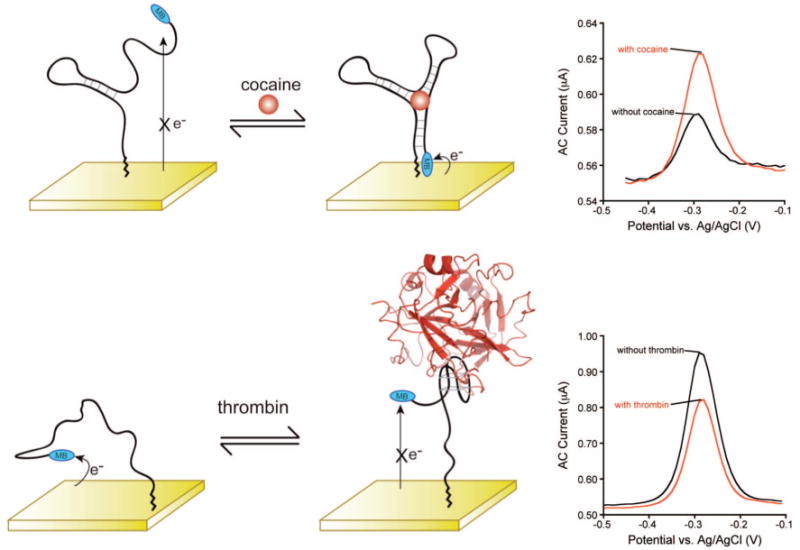Figure 1.

E-AB sensors consist of a redox-tagged DNA or RNA aptamer directed against a specific target (left). In the absence of target, the aptamer remains relatively or entirely unfolded. Upon addition of target, the aptamer undergoes binding induced folding which brings the redox tag in proximity to the electrode, thus increasing faradaic current (e.g., cocaine E-AB sensor, top), or fixes the redox tag away from the electrode, reducing faradaic current (e.g., thrombin E-AB sensor, bottom). (right) Alternating current voltammetry (AVC) is used to monitor the faradaic current arising from the tag and thus the presence of target.
